Understanding What Causes RWIs (Recreational Water Illnesses) And How To Prevent Them
Anyone who owns a fibreglass pool knows the importance of keeping the water in the pool clean. This is because if the pool water isn't clean, then it's possible for someone swimming in the pool to contract recreational water illnesses, better known as RWIs. It's more likely for contaminated water in natural bodies of water to cause people to get RWIs. But getting them because of a pool isn't unheard of either. RWIs include various infections that are waterborne, which can end up affecting different body parts. The most common symptom that people experience is diarrhea.
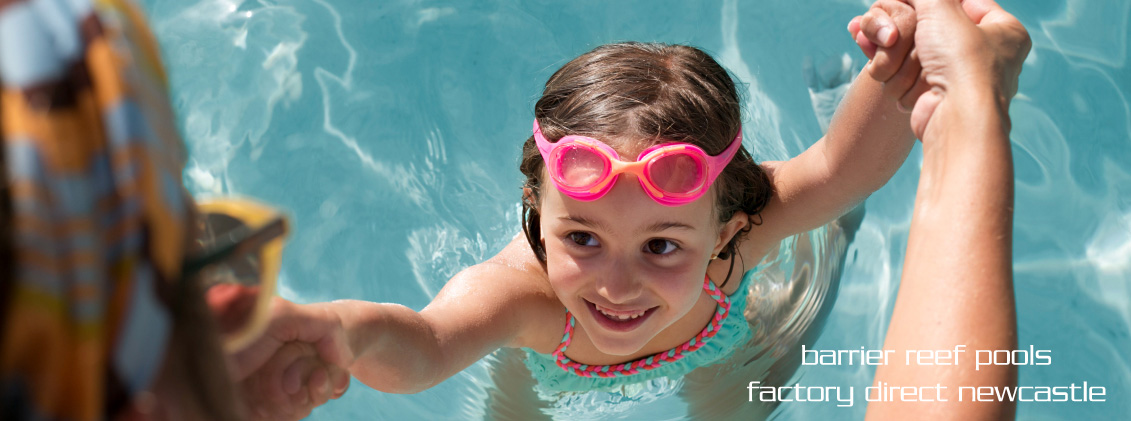
What are Recreational Water Illnesses?
RWIs are essentially illnesses you can contract from contaminants present in pool water, which can include but are not limited to harmful bacteria. Let’s look at the common symptoms associated with RWIs. They include:
- Diarrhea: This is by far the most common symptom that people report experiencing if they have an RWI. Swallowing contaminated water can lead to this problem. Parasites, viruses and bacteria can all cause a person to get diarrhea.
- Flu symptoms: You could also experience the same symptoms you would have experienced if you had the flu. These symptoms include developing a fever and experiencing body aches as well as chills. Parasites and bacteria both can cause you to feel like you had the flu.
- Getting a rash: There’s a particular kind of bacteria that thrives in water that is warm. This is the Pseudomonas aeruginosa. It causes an infection known as hot tub folliculitis. An infection caused by this bacteria can see you developing rashes on parts of the skin that are uncovered.
- Pain in the ear: The same bacteria, Pseudomonas aeruginosa, can also cause people to develop Swimmer’s Ear. This is an infection that affects the outer part of the ear canal. This can cause the ear to start swelling. The ear could become red and itchy, and there could be drainage as well.
- Symptoms that are neurologic: It’s possible for pathogens that are present in the water to reach the brain. When this happens, then can cause symptoms such as light sensitivity, headaches, confusion, and even seizures. A bacteria that’s called Leptospira can cause this to happen.
These were the most common symptoms associated with RWIs, but you can experience other symptoms as well. If you experience one or more of these symptoms, after swimming in water that might be contaminated, seek medical help.
How Do People Contract RWIs?
The most common way that people can contract RWI is by swallowing or inhaling water that might be contaminated with pathogens. If this water enters the body through the ear or the nose, then it can cause RWI as well. It’s also possible for pathogens present in contaminated water to enter your body from cuts in the skin. If contaminated water is exposed to the skin for a long period of time, then it can affect you through prolonged exposure.
Contaminated water can be present anywhere but is more commonly found in natural water bodies. Oceans, lakes, public pools, water parks, and even mountain streams can all have water that’s contaminated.

Contaminated water can be present anywhere but is more commonly found in natural water bodies. Oceans, lakes, public pools, water parks, and even mountain streams can all have water that’s contaminated.
Some of the pathogens that cause RWIs tend to be rather hardy. Just a little amount of chlorine isn’t enough to kill them. There are also pathogens that thrive in water temperatures that are higher. This means that they are more likely to enter the water in your pool during the summer season. Depending on the kind of pathogen, the source of the contamination can change. This will also affect the route that the infection takes through your body.
Water that is brackish, as well as saltwater pools, can be home to pathogens that cause cholera. If the water has been contaminated with human stool, then this can cause various diseases, such as Typhoid fever, E. Coli, Norovirus, and more.
If it’s the groundwater that’s been contaminated, then this can cause either giardia or cryptosporidium. If the water in your fibreglass pool mixes with run-off from the sewage, then you could get cyclosporiasis. You could also get amoebiasis.
The pathogen Pseudomonas aeruginosa is usually found in hot tubs, as well as swimming pools. They can affect you through prolonged exposure to the skin, or through the ear canal. Finally, if the water in the fibreglass pool has been contaminated with urine, then it can cause leptospira.
RWI won’t spread between people through touching or intimacy. Even rashes that you could get from your hot tub, aren’t contagious.
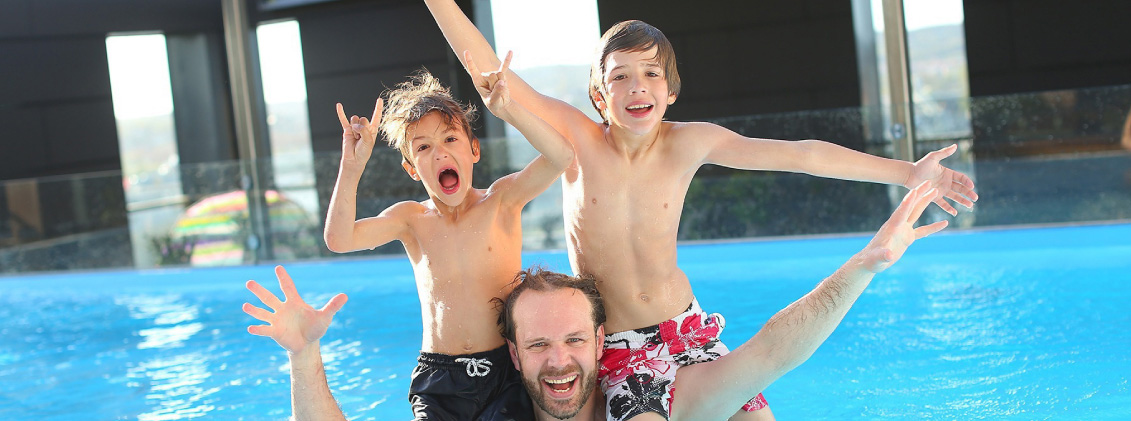
What Kind of Treatment Should You Get for RWIs?
The kind of treatment that you should get, will depend on whether you were infected by a parasite, bacteria or virus. Your healthcare provider may perform various tests on you to determine the cause of the infection.
If it’s bacteria that’s affected you, then you’ll need to take antibiotics. For parasitic infections, you’ll need anti-parasites as well as antibiotics. Some illnesses, like the norovirus, tend to go away by themselves. You’ll only need to provide yourself with supportive care and ensure that you’re not dehydrated.
In case you develop Swimmer’s Ear, you’ll need to get ear drops that are antibiotics or ear drops of acetic acid.
Preventing RWIs
This is what you can do to prevent people from contracting RWIs:
- Ask everyone to shower using soap, before they enter the pool.
- Ensure that the chlorine levels of your fibreglass pool are properly maintained.
- Should someone in the family have diarrhea, then ask them to wait two weeks before entering the pool.
- If children using the pool need to use the toilet, help them get to one as soon as possible, to prevent them from going in the pool water.
- If your children aren’t potty trained, ensure they are wearing both swim diapers as well as plastic pants.
- Always dry out your ears after swimming, or you can also wear earplugs while you’re in the water.
Conclusion
Recreational water illnesses can negatively affect your health, causing you to develop various problems from diarrhea to a fever. If the water in your fibreglass pool isn’t properly maintained, then it can be contaminated with dangerous pathogens. This guide helps you learn more about these pathogens, as well as how to prevent RWIs in the first place.
Understanding What Causes RWIs (Recreational Water Illnesses) And How To Prevent Them
Anyone who owns a fibreglass pool knows the importance of keeping the water in the pool clean. This is because if the pool water isn't clean, then it's possible for someone swimming in the pool to contract recreational water illnesses, better known as RWIs. It's more likely for contaminated water in natural bodies of water to cause people to get RWIs. But getting them because of a pool isn't unheard of either. RWIs include various infections that are waterborne, which can end up affecting different body parts. The most common symptom that people experience is diarrhea.
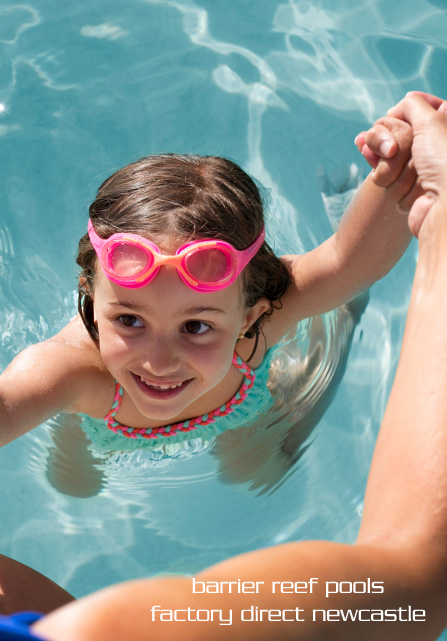
What are Recreational Water Illnesses?
RWIs are essentially illnesses you can contract from contaminants present in pool water, which can include but are not limited to harmful bacteria. Let’s look at the common symptoms associated with RWIs. They include:
- Diarrhea: This is by far the most common symptom that people report experiencing if they have an RWI. Swallowing contaminated water can lead to this problem. Parasites, viruses and bacteria can all cause a person to get diarrhea.
- Flu symptoms: You could also experience the same symptoms you would have experienced if you had the flu. These symptoms include developing a fever and experiencing body aches as well as chills. Parasites and bacteria both can cause you to feel like you had the flu.
- Getting a rash: There’s a particular kind of bacteria that thrives in water that is warm. This is the Pseudomonas aeruginosa. It causes an infection known as hot tub folliculitis. An infection caused by this bacteria can see you developing rashes on parts of the skin that are uncovered.
- Pain in the ear: The same bacteria, Pseudomonas aeruginosa, can also cause people to develop Swimmer’s Ear. This is an infection that affects the outer part of the ear canal. This can cause the ear to start swelling. The ear could become red and itchy, and there could be drainage as well.
- Symptoms that are neurologic: It’s possible for pathogens that are present in the water to reach the brain. When this happens, then can cause symptoms such as light sensitivity, headaches, confusion, and even seizures. A bacteria that’s called Leptospira can cause this to happen.
These were the most common symptoms associated with RWIs, but you can experience other symptoms as well. If you experience one or more of these symptoms, after swimming in water that might be contaminated, seek medical help.
How Do People Contract RWIs?
The most common way that people can contract RWI is by swallowing or inhaling water that might be contaminated with pathogens. If this water enters the body through the ear or the nose, then it can cause RWI as well. It’s also possible for pathogens present in contaminated water to enter your body from cuts in the skin. If contaminated water is exposed to the skin for a long period of time, then it can affect you through prolonged exposure.
Contaminated water can be present anywhere but is more commonly found in natural water bodies. Oceans, lakes, public pools, water parks, and even mountain streams can all have water that’s contaminated.
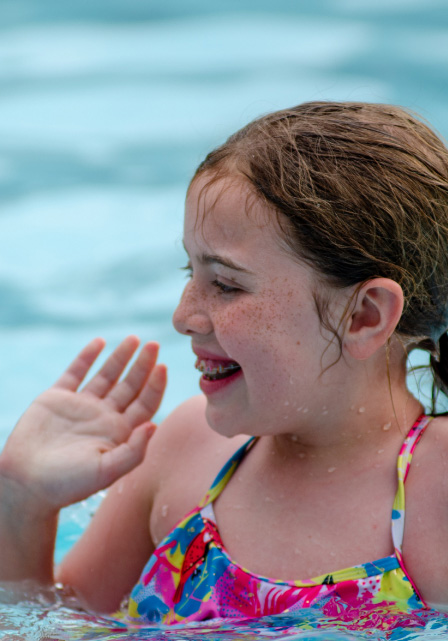
Contaminated water can be present anywhere but is more commonly found in natural water bodies. Oceans, lakes, public pools, water parks, and even mountain streams can all have water that’s contaminated.
Some of the pathogens that cause RWIs tend to be rather hardy. Just a little amount of chlorine isn’t enough to kill them. There are also pathogens that thrive in water temperatures that are higher. This means that they are more likely to enter the water in your pool during the summer season. Depending on the kind of pathogen, the source of the contamination can change. This will also affect the route that the infection takes through your body.
Water that is brackish, as well as saltwater pools, can be home to pathogens that cause cholera. If the water has been contaminated with human stool, then this can cause various diseases, such as Typhoid fever, E. Coli, Norovirus, and more.
If it’s the groundwater that’s been contaminated, then this can cause either giardia or cryptosporidium. If the water in your fibreglass pool mixes with run-off from the sewage, then you could get cyclosporiasis. You could also get amoebiasis.
The pathogen Pseudomonas aeruginosa is usually found in hot tubs, as well as swimming pools. They can affect you through prolonged exposure to the skin, or through the ear canal. Finally, if the water in the fibreglass pool has been contaminated with urine, then it can cause leptospira.
RWI won’t spread between people through touching or intimacy. Even rashes that you could get from your hot tub, aren’t contagious.
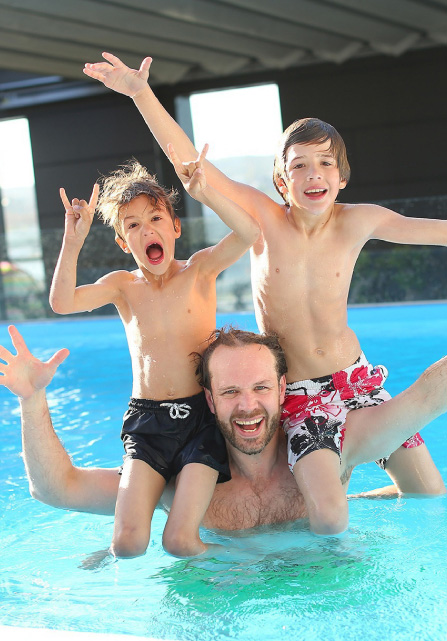
What Kind of Treatment Should You Get for RWIs?
The kind of treatment that you should get, will depend on whether you were infected by a parasite, bacteria or virus. Your healthcare provider may perform various tests on you to determine the cause of the infection.
If it’s bacteria that’s affected you, then you’ll need to take antibiotics. For parasitic infections, you’ll need anti-parasites as well as antibiotics. Some illnesses, like the norovirus, tend to go away by themselves. You’ll only need to provide yourself with supportive care and ensure that you’re not dehydrated.
In case you develop Swimmer’s Ear, you’ll need to get ear drops that are antibiotics or ear drops of acetic acid.
Preventing RWIs
This is what you can do to prevent people from contracting RWIs:
- Ask everyone to shower using soap, before they enter the pool.
- Ensure that the chlorine levels of your fibreglass pool are properly maintained.
- Should someone in the family have diarrhea, then ask them to wait two weeks before entering the pool.
- If children using the pool need to use the toilet, help them get to one as soon as possible, to prevent them from going in the pool water.
- If your children aren’t potty trained, ensure they are wearing both swim diapers as well as plastic pants.
- Always dry out your ears after swimming, or you can also wear earplugs while you’re in the water.
Conclusion
Recreational water illnesses can negatively affect your health, causing you to develop various problems from diarrhea to a fever. If the water in your fibreglass pool isn’t properly maintained, then it can be contaminated with dangerous pathogens. This guide helps you learn more about these pathogens, as well as how to prevent RWIs in the first place.



